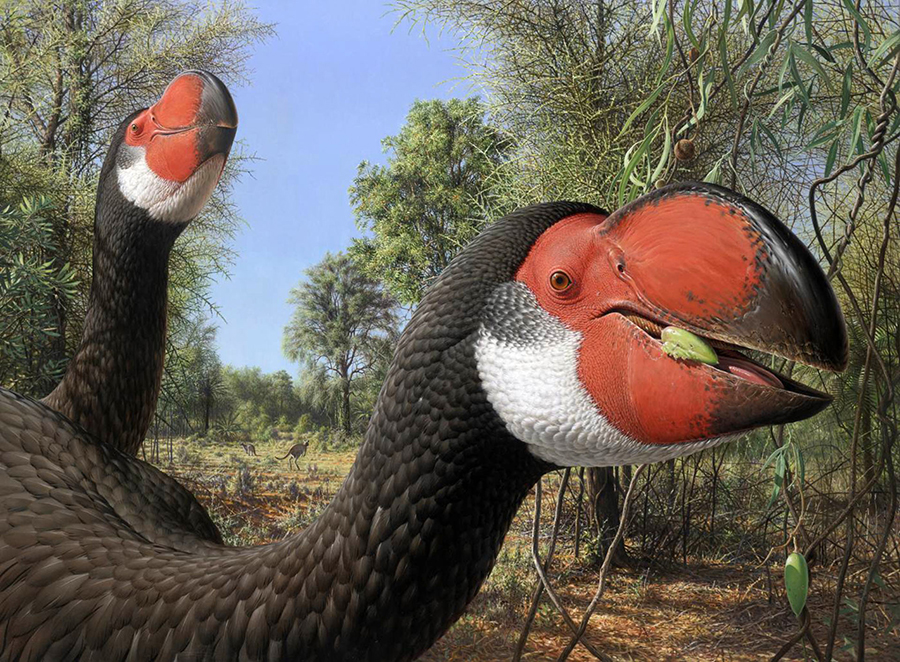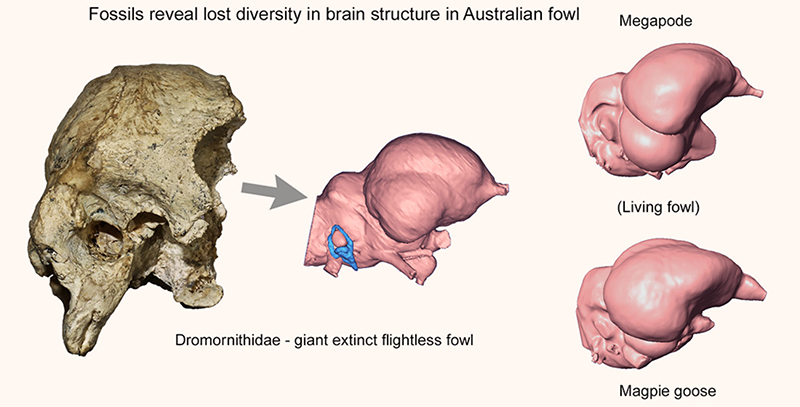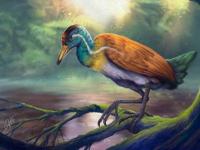Giant Extinct Australian Birds Had Well-Developed Stereoscopic Vision and Small Brain

Paleontologists from Flinders University have examined the brains of four species of extinct giant mihirungs (dromornithid birds): Ilbandornis woodburnei and three species of the genus Dromornis.
Dromornithids are an extinct group of large flightless birds that lived in Australia from the Eocene to the Late Pleistocene epoch.
Four genera and eight species are currently recognized, with diversity highest in the Miocene epoch.
Collectively known as ‘mihirungs’ (an Aboriginal word for a giant bird), these birds not only reached much larger sizes than ratites (emus, cassowaries, ostriches, kiwis and kin), but were much more intimidating in appearance.
Unlike the small-headed ratites, they had massive skulls, with sail-like bills.
Even the smallest of these birds was as large as an emu, while others grew to the size of a horse, with males weighing up to 650 kg.
Despite their size, all were gentle giants, browsing on fruit and leaves of shrubs.
“Together with their large, forward-facing eyes and very large bills, the shape of their brains and nerves suggested these birds likely had well-developed stereoscopic vision, or depth perception, and fed on a diet of soft leaves and fruit,” said Dr. Warren Handley, a vertebrate paleontologist in the Palaeontology Group at Flinders University.
“The shape of their brains and nerves has told us a lot about their sensory capabilities, and something about their possible lifestyle which enabled these remarkable birds to live in the forests around river channels and lakes across Australia for an extremely long time.”
“It’s exciting when we can apply modern imaging methods to reveal features of dromornithid morphology that were previously completely unknown.”

In the study, Dr. Handley and his colleagues, Dr. Trevor Worthy from the Palaeontology Group at Flinders University, compared the brain structures of four mihirung species: from the earliest Dromornis murrayi that lived 24 million years ago to Dromornis planei and Ilbandornis woodburnei from 12 million years ago and Dromornis stirtoni from 7 million years ago.
“Ranging from cassowary in size to what’s known as the world’s largest bird, the largest and last species Dromornis stirtoni was an extreme evolutionary experiment,” Dr. Worthy said.
The researchers found that mihirung brains and nerves were most like those of modern day chickens and Australian mallee fowl.
“The unlikely truth is these birds were related to fowl — chickens and ducks — but their closest cousin and much of their biology still remains a mystery,” Dr. Worthy said.
“While the brains of dromornithids were very different to any bird living today, it also appears they shared a similar reliance on good vision for survival with living ratities such as ostrich and emu.”
“Dromornis stirtoni had the largest skull but behind the massive bill was a weird cranium,” he added.
“To accommodate the muscles to wield this massive bill, the cranium had become taller and wider than it was long, and so the brain within was squeezed and flattened to fit.”
“It would appear these giant birds were probably what evolution produced when it gave chickens free reign in Australian environmental conditions and so they became very different to their relatives the megapodes — or chicken-like landfowls which still exist in the Australasian region.”
The results were published in the March 2021 issue of the journal Diversity.
_____
Warren D. Handley & Trevor H. Worthy. 2021. Endocranial Anatomy of the Giant Extinct Australian Mihirung Birds (Aves, Dromornithidae). Diversity 13 (3): 124; doi: 10.3390/d13030124
Source: www.sci-news.com/








